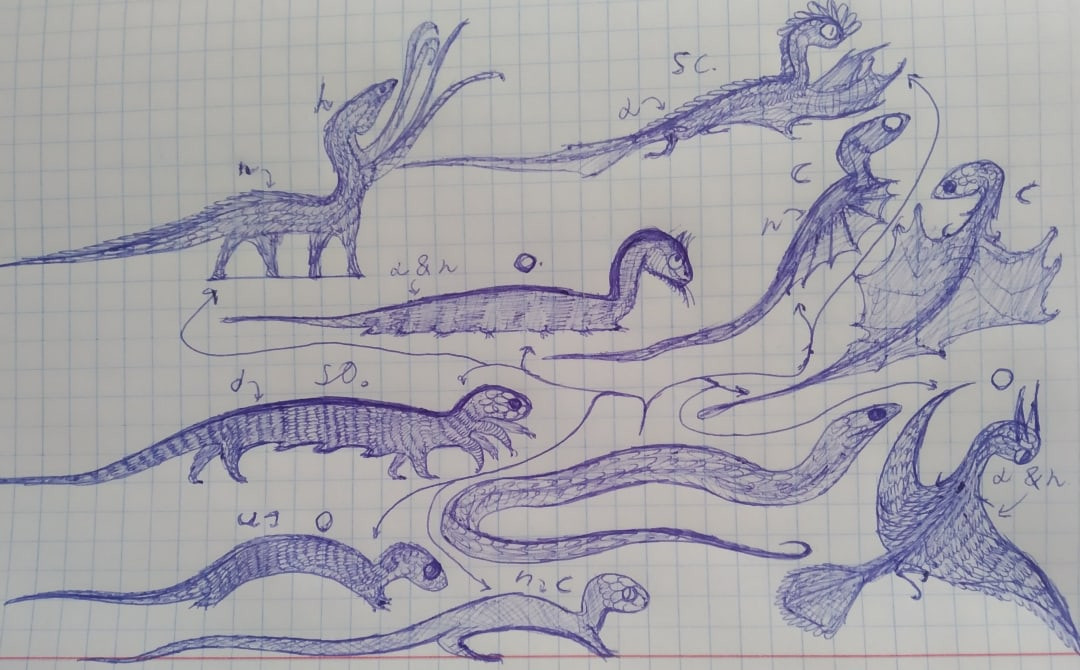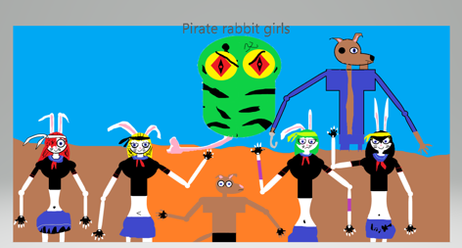HOME | DD
 Vollie93439024 — Cladogram of Snakes
Vollie93439024 — Cladogram of Snakes

#dragon #future #snake #snakes #speculative #vertebrate #chordate #amniote #diapsid #futureevolution #speculativeevolution #speculativebiology #speculativezoology
Published: 2020-06-07 11:37:24 +0000 UTC; Views: 1451; Favourites: 28; Downloads: 7
Redirect to original
Description
h - herbivoreo - omnivorous
so - specialized omnivore
c - carnivorous
sc - specialized carnivore
Lifestyle:
n - night
d - day
d8n - night and day
u - underground
The mass extinction of insects led to a great and terrible extinction: many higher plants, almost all insectivorous animals, died out. However, this weakly affected mammals, which did not depend directly or indirectly on insects and snakes, which fed on everything they could get (from small invertebrates to large vertebrates). It was these snakes that later occupied almost the entire vacant niche.
Some groups developed a direct crawl, which is due to a more slippery surface, which is usually found in humid environments, while others maintained a tortuous motion, using ribs as an additional push. Initially, both of these treasures had sufficiently mobile ribs that helped them move a little faster, compared to many other snakes, which was very important, because a sharp decline in biodiversity forced them to lead a much more active and mobile lifestyle. Lack of food also led polypodophis to the fact that some groups began to eat everything that seemed edible, while others retained their predatory nature. Omnivorous species inhabited predominantly humid environments, eating everything that they can reach. Predatory species lived mainly in deserts and semi-deserts, hunting for everything that moves. Many of them repeatedly tried to master the flight for 2 reasons: firstly, it allowed to save energy, overcoming long distances; secondly, this provided a larger viewing radius, which was very important for predators, guided mainly by means of sight and smell. Moreover, they were divided into vertically and horizontally taking off. For the first, it was important to jump and grab prey, using their membrane as a fishing net. The second ones rather pursued the prey, and therefore their legs are spread on each side, giving a sufficiently large step when running. At the same time, vertically soaring ones were able to master the flapping flight. And only later horizontally soaring joined them.
But in parallel with these two groups, another formed - jumpophis. Their feature is that they know how to jump. This ability has developed in semi-woody groups. But even they had to go down from the trees to the ground. The ability to jump allowed them to travel long distances, spending as little energy as possible. But unlike the kangaroos, they jumped a little differently: after jumping, they sharply opened their parachute and, like flying fish, could fly quite a distance apart, just planning. In addition, they were, to some extent, the first attempt at polypodophises to take off.
Related content
Comments: 10

👍: 0 ⏩: 2

👍: 1 ⏩: 1

👍: 0 ⏩: 0

👍: 1 ⏩: 1

👍: 0 ⏩: 1

👍: 2 ⏩: 1

👍: 0 ⏩: 1

👍: 0 ⏩: 1

👍: 0 ⏩: 1

👍: 1 ⏩: 0

























